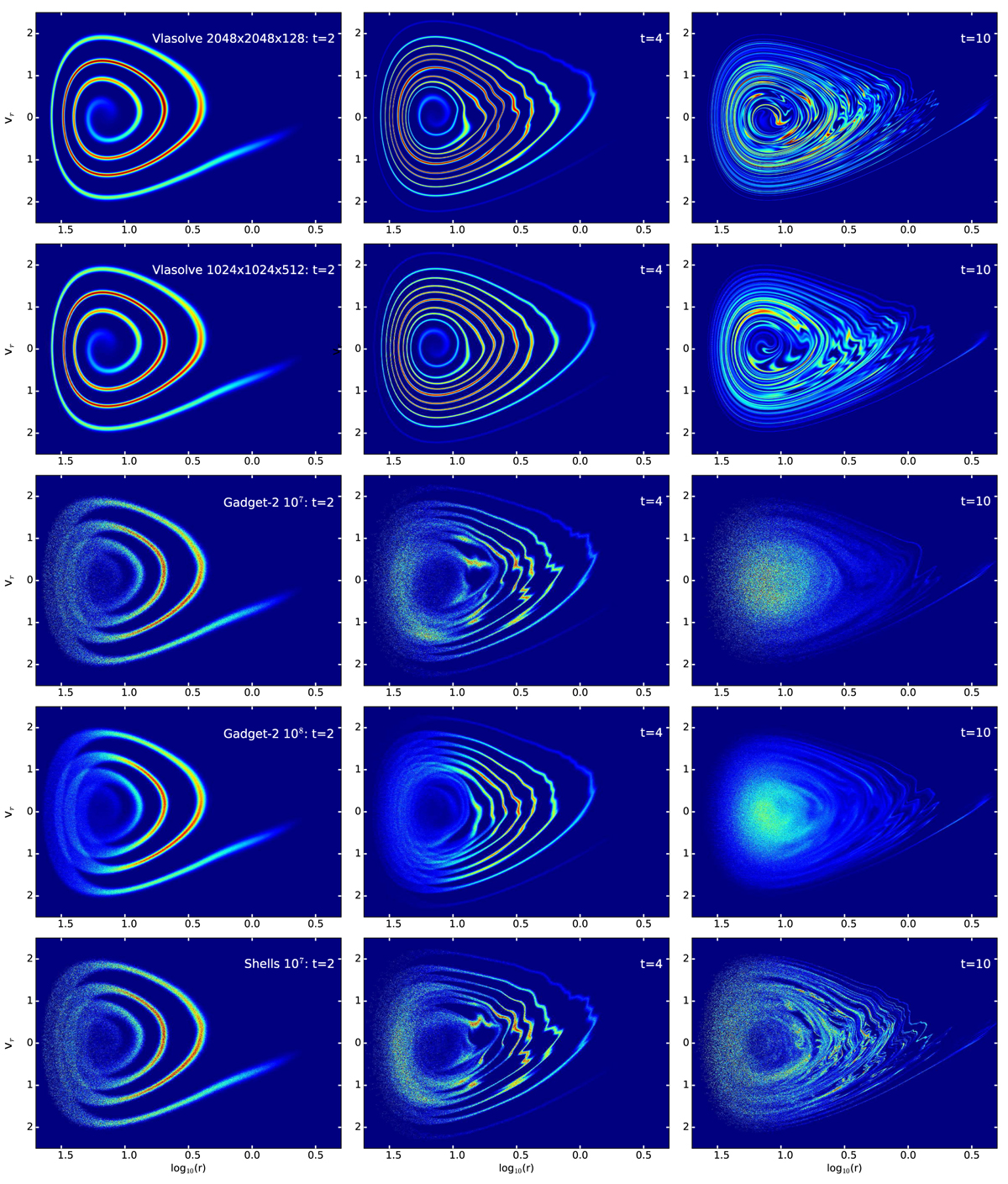Fig. 3.

Closer examination of the onset of instabilities in phase space for the (η, n) = (0.1, −1.5) simulations: effects of spatial and mass resolutions. For the same angular momentum slice, j = 0.06, as in lower panels of Fig. 2, the phase space density is represented in (r, υr) space. The two first lines of panels correspond to two VlaSolve simulations with respective resolutions (Nr, Nv, Nj) = (2048, 2048, 128) and (1024, 512, 512). The next two lines of panels correspond to two Gadget-2 simulations with respective numbers of particles N = 107 and N = 108 and the last line of panels gives, for N = 107, the result obtained for the shell code. For the N-body simulations, the phase-space density is sampled on grids with resolution (Nr, Nv, Nj) = (1024, 1024, 32). One can notice that the phase-space sheet is less well defined or “fuzzier” in the N-body simulations than in the Vlasov code at low radius; this is because what is actually plotted is the distribution of particles (or shells) in a relatively large interval of angular momentum j ∈ [0.056, 0.077] to have sufficient number of particles to trace the phase-space distribution function, while for the Vlasov simulation, we selected only the slice corresponding to the value of j of interest. This figure illustrates the effect of radial instabilities and their dependence on spatial resolution (for the Vlasov code) or mass resolution (for the N-body code). We note the close agreement between the shell simulation and the Gadget-2 runs with 10 million particles in the middle panels of the third and fifth lines, while they diverge in the right panels when radial orbit instability effects become prominent in Gadget-2.
Current usage metrics show cumulative count of Article Views (full-text article views including HTML views, PDF and ePub downloads, according to the available data) and Abstracts Views on Vision4Press platform.
Data correspond to usage on the plateform after 2015. The current usage metrics is available 48-96 hours after online publication and is updated daily on week days.
Initial download of the metrics may take a while.


